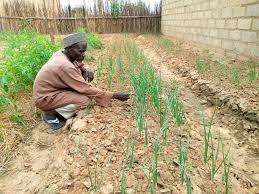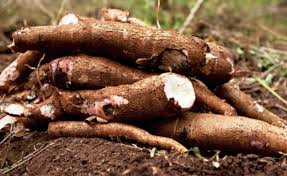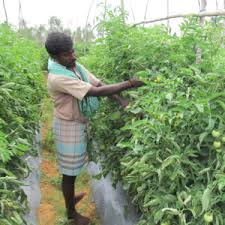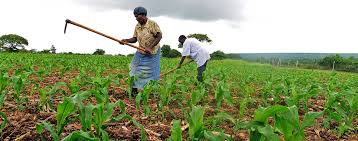Crop production is the process of growing plants for food, fiber, and other products used to sustain and enhance human life. It plays a critical role in agriculture, contributing significantly to the economy, food security, and livelihoods worldwide.
Understanding the various classifications of crops and their specific cultivation methods is essential for successful farming.
This article provides an overview of crop production, including the classification of crops, and detailed cultivation methods for cereal crops, legume crops, root and tuber crops, and vegetable crops.
Classification of Crops
Crops can be classified based on different criteria, including their growth habits, life cycles, and usage. Here are the main classifications:
1. Food Crops: Grown primarily for human consumption. Examples include cereals, legumes, fruits, and vegetables.
2. Cash Crops: Cultivated for sale and profit. Examples include cotton, tobacco, and coffee.
3. Forage Crops: Grown to feed livestock. Examples include alfalfa and clover.
4. Cover Crops: Planted to protect and enrich the soil. Examples include clover and rye.
5. Industrial Crops: Used for industrial purposes, such as oil and fiber production. Examples include rubber and palm oil.
Cereal Crops and Their Cultivation Methods

Cereal crops are grasses cultivated for their edible grains, which serve as staple foods in many diets. Common cereal crops include rice, wheat, corn, barley, and oats.
Cultivation Methods for Cereal Crops:
1. Soil Preparation: Start by preparing the soil through plowing and harrowing to create a fine seedbed. Test soil pH and nutrient levels, and amend with lime or fertilizers as needed.
2. Seed Selection: Choose high-quality seeds suited for the local climate and soil conditions. For example, select drought-resistant varieties in dry regions.
3. Sowing: Plant seeds at the recommended depth and spacing. For example, sow wheat seeds 1 to 2 inches deep in rows spaced 6 to 12 inches apart.
4. Irrigation: Ensure adequate water supply through rainfed or irrigation systems. For instance, flood irrigation is common for rice, while drip irrigation is suitable for corn.
5. Pest and Weed Management: Implement integrated pest management (IPM) practices, including crop rotation and biological controls. Use herbicides judiciously to control weeds.
6. Harvesting: Harvest when grains are fully mature, using manual or mechanical methods. For example, use a combine harvester for wheat and corn.
Legume Crops and Their Cultivation Methods
Legume crops are plants that produce pods with seeds inside. They are valuable for their high protein content and ability to fix nitrogen in the soil. Common legume crops include beans, lentils, chickpeas, and peanuts.
Cultivation Methods for Legume Crops:
1. Soil Preparation: Prepare the soil by tilling and ensuring good drainage. Test the soil for nutrient levels and pH.
2. Seed Selection: Select high-quality seeds adapted to local conditions. For example, choose drought-tolerant varieties for arid regions.
3. Sowing: Sow seeds at the recommended depth, usually 1 to 2 inches deep. For example, plant beans in rows 2 to 3 feet apart.
4. Fertilization: Apply phosphorus and potassium fertilizers to enhance growth, as legumes have lower nitrogen needs due to their nitrogen-fixing ability.
5. Pest and Disease Management: Monitor for common pests and diseases, and apply organic or chemical controls as necessary. For example, use neem oil for aphid control.
6. Harvesting: Harvest when the pods are dry and seeds rattle inside. Manual harvesting is common for small-scale farms, while larger farms may use mechanical harvesters.
Read Also: Best Number of Ruminant Animals per Housing Unit for Fattening
Root and Tuber Crops and Their Cultivation Methods

Root and tuber crops are underground storage organs that provide essential carbohydrates. Common examples include potatoes, carrots, sweet potatoes, and cassava.
Cultivation Methods for Root and Tuber Crops:
1. Soil Preparation: Loosen the soil to improve drainage and aeration. Conduct soil tests to determine nutrient needs and amend accordingly.
2. Seed Selection: Use disease-free seed tubers or root cuttings. For example, choose certified seed potatoes for planting.
3. Planting: Plant tubers or roots at the recommended depth, usually 4 to 6 inches. For example, space potato rows 2 to 3 feet apart.
4. Water Management: Maintain consistent moisture, especially during tuber development. Use drip irrigation for efficient water use.
5. Pest Control: Implement pest control measures as needed, such as crop rotation and the use of resistant varieties. For instance, rotate crops to disrupt pest life cycles.
6. Harvesting: Harvest when foliage starts to die back. Use shovels or specialized harvesters for larger areas.
Vegetable Crops and Their Cultivation Methods
Vegetable crops are grown for human consumption and include a wide variety of plants. Common vegetables include tomatoes, lettuce, peppers, and carrots.
Cultivation Methods for Vegetable Crops:
1. Soil Preparation: Prepare the soil by tilling and incorporating organic matter like compost. Conduct soil tests to determine nutrient levels.
2. Seed and Plant Selection: Choose high-quality seeds or seedlings suited for local conditions. For example, select heat-resistant varieties in warm climates.
3. Sowing/Transplanting: Sow seeds directly in the field or transplant seedlings. For example, plant tomatoes 1 to 2 inches deep, spacing them 2 to 3 feet apart.
4. Irrigation: Provide adequate moisture, especially during flowering and fruiting stages. Consider using drip irrigation for water efficiency.
5. Pest and Weed Management: Monitor crops for pests and diseases, applying organic or chemical controls as needed. Use mulch to suppress weeds and retain moisture.
6. Harvesting: Harvest vegetables when they reach the desired size and maturity. For example, pick tomatoes when they are fully colored but still firm.
Fruit Crops and Their Cultivation Methods
Fruit crops are grown for their edible fruits, which are rich in vitamins, minerals, and other essential nutrients. Common fruit crops include apples, oranges, bananas, and berries.
Cultivation Methods for Fruit Crops:
1. Site Selection: Choose a suitable location with adequate sunlight, good drainage, and fertile soil. For example, most fruit trees prefer well-drained loamy soil.
2. Soil Preparation: Prepare the soil by tilling and adding organic matter like compost. Test the soil for pH and nutrient levels, amending as necessary.
3. Planting: Plant fruit trees or shrubs at the correct depth, usually with the root crown level with the soil surface. For example, space apple trees 15 to 20 feet apart.
4. Watering: Ensure consistent moisture, especially during flowering and fruiting. Use drip irrigation to conserve water.
5. Fertilization: Apply balanced fertilizers according to soil tests. For instance, use nitrogen-rich fertilizers in early spring to promote growth.
6. Pest and Disease Management: Monitor for common pests like aphids and diseases such as powdery mildew. Use integrated pest management (IPM) techniques to control these issues.
7. Harvesting: Harvest fruits when they are ripe. For example, pick apples in late summer or early fall when they are firm and color has developed.
Read Also: Common Rabbit Diseases and How to Cure them
Oilseed Crops and Their Cultivation Methods

Oilseed crops are grown for their seeds, which contain high oil content. Common oilseed crops include soybeans, sunflowers, and canola.
Cultivation Methods for Oilseed Crops:
1. Soil Preparation: Prepare the soil through tilling and incorporating organic matter. Ensure the soil is well-drained and fertile.
2. Seed Selection: Choose high-yield, disease-resistant varieties suited for your climate. For instance, select drought-resistant soybean varieties for arid regions.
3. Sowing: Plant seeds at the recommended depth and spacing. For example, plant soybean seeds 1 to 1.5 inches deep, spaced 6 inches apart.
4. Irrigation: Maintain adequate moisture, especially during seed development. Use irrigation systems like drip or center pivot for efficiency.
5. Fertilization: Apply fertilizers based on soil tests, focusing on nitrogen, phosphorus, and potassium. Oilseeds often require balanced nutrients for optimal growth.
6. Pest Control: Implement pest control measures, such as crop rotation and beneficial insects. Monitor for pests like aphids and caterpillars.
7. Harvesting: Harvest when seeds are mature and moisture content is low, usually using a combine harvester for larger fields.
Fiber Crops and Their Cultivation Methods
Fiber crops are grown for their fibers, which are used in textiles, ropes, and other materials. Common fiber crops include cotton, flax, and jute.
Cultivation Methods for Fiber Crops:
1. Soil Preparation: Prepare the soil by tilling and adding organic matter. Test for nutrient levels and amend as needed.
2. Seed Selection: Choose high-quality seeds that are resistant to diseases and pests. For example, select drought-tolerant cotton varieties.
3. Sowing: Sow seeds at the recommended depth and spacing. For instance, plant cotton seeds 1 to 2 inches deep and spaced 3 to 4 feet apart.
4. Irrigation: Provide adequate water, especially during flowering and fiber development. Utilize efficient irrigation systems like drip irrigation.
5. Pest Management: Monitor for pests like boll weevils and apply IPM techniques. Use traps and biological control methods to minimize chemical use.
6. Harvesting: Harvest when the fibers are mature, usually by hand or using mechanical cotton pickers. Ensure fibers are clean and dry for processing.
Spices and Medicinal Crops and Their Cultivation Methods
Spices and medicinal crops are grown for their aromatic qualities and health benefits. Common examples include turmeric, ginger, basil, and mint.
Cultivation Methods for Spices and Medicinal Crops:
1. Site Selection: Choose a well-drained location with adequate sunlight. Many spices prefer warm climates.
2. Soil Preparation: Prepare the soil by tilling and adding organic matter. Conduct soil tests to determine pH and nutrient needs.
3. Seed Selection: Use high-quality seeds or seedlings suited for local conditions. For example, choose disease-free ginger rhizomes for planting.
4. Sowing/Planting: Plant seeds or rhizomes at the correct depth and spacing. For instance, plant turmeric rhizomes 2 to 4 inches deep.
5. Watering: Maintain consistent moisture without waterlogging. Use mulching to retain soil moisture and suppress weeds.
6. Pest and Disease Control: Monitor crops for pests and diseases, applying organic controls when necessary. For example, use neem oil for pest management.
7. Harvesting: Harvest spices when they are mature, usually when foliage begins to yellow. For instance, dig up ginger rhizomes in the fall.
Sustainable Crop Production Practices
Sustainable crop production practices aim to maintain productivity while preserving environmental quality. Here are some key practices:
1. Crop Rotation: Alternating crops to improve soil health and reduce pests.
2. Cover Cropping: Planting cover crops to protect soil and improve fertility.
3. Integrated Pest Management (IPM): Combining biological, cultural, and chemical methods to manage pests sustainably.
4. Reduced Tillage: Minimizing soil disturbance to maintain soil structure and health.
5. Organic Practices: Using natural fertilizers and pest control methods to promote sustainability.
Common Challenges in Crop Cultivation
Crop cultivation faces several challenges, including:
1. Climate Variability: Changes in weather patterns can affect crop yields.
2. Soil Degradation: Poor practices can lead to erosion and nutrient depletion.
3. Pest and Disease Pressure: Increasing pest resistance and emerging diseases threaten crops.
4. Water Scarcity: Limited water resources can hinder irrigation.
5. Market Access: Farmers may struggle to access markets for their produce.
Crop production is a vital component of agriculture, providing food, fiber, and resources for people worldwide. Understanding the classification of crops and their specific cultivation methods is essential for successful farming.
By following best practices in soil preparation, seed selection, planting, irrigation, pest management, and harvesting, farmers can optimize crop yields and contribute to food security. As global demand for food continues to rise, effective crop production practices will be crucial for sustainable agriculture and economic growth.
Do you have any questions, suggestions, or contributions? If so, please feel free to use the comment box below to share your thoughts. We also encourage you to kindly share this information with others who might benefit from it. Since we can’t reach everyone at once, we truly appreciate your help in spreading the word. Thank you so much for your support and for sharing!
Read Also: The Effect of Heat Stress on Animal Productivity
Frequently Asked Questions
We will update this section soon.

